Arvind Subramanian
The world's two economic superpowers, the United States of America and the People's Republic of China, will meet soon for the third installment of their Strategic and Economic Dialogue.
Beyond the specifics, the real issue for the US and the world is really about China's looming economic dominance.
President Barack Obama's State of the Union address after President Hu Jintao's visit to the US in January 2011 showed the level of anxiety that policy makers feel about China as a potential rival and perhaps a threat, with growing economic, military and political power, including its bankrolling of American debt.
America vs China: Which is the real superpower?
Image: Chinese students wave national flags to greet Chinese President Hu Jintao in US.Photographs: Yuri Gripas/Reuters.
The same was said, some pointed out, of the rise of Russia and Japan, 20 and 40 years ago, respectively, and those threats turned out to be false alarms.
But what if the threat is actually greater than policy makers suppose?
According to the International Monetary Fund, for example, total US gross domestic product in 2010 was $14.7 trillion, more than twice China's $5.8 trillion, making the average American about 11 times more affluent as the average Chinese.
America vs China: Which is the real superpower?
Image: A wallet cover bearing an image of President Barack Obama's face in Beijing.Photographs: Jason Lee/Reuters.
Americans also draw satisfaction from their unmatched strengths of an open society, an entrepreneurial culture, and world-class universities and research institutions.
But these beliefs may be overly sanguine. The underlying numbers that contribute to them are a little misleading because they are based on converting the value of goods and services around the world into dollars at market exchange rates.
America vs China: Which is the real superpower?
Image: A worker inspects a container.Photographs: Bazuki Muhammad/Reuters.
Several goods and services that are not traded across borders (medical care, retail services, construction and so on) are cheaper in poorer countries because labour is abundant.
America vs China: Which is the real superpower?
Image: A shop assistant checks hundred yuan bank notes at a shop in Xiangfan.Photographs: Reuters.
Estimates of purchasing power parity take account of these differing costs and are an alternative, and for some purposes a better, way of computing and comparing standards of living and economic output across countries.
America vs China: Which is the real superpower?
Image: Chinese workers.My calculations (explained in greater detail on the Peterson Institute website) show that the Chinese economy in 2010, adjusted for purchasing power, was worth about $14.8 trillion, surpassing that of the US.
And, on this basis, the average American is "only" four times as wealthy as the average Chinese, not 11 times as rich, as the conventional numbers suggest.
America vs China: Which is the real superpower?
Image: Dollar notes.They have real-world significance, especially in the balance of power and economic dominance.
The conventional numbers would suggest that the US has three times the capability of China to mobilise real military resources in the event of a conflict. The numbers based on purchasing power parity suggest that conventional estimates considerably exaggerate US capability.
America vs China: Which is the real superpower?
Image: Workers perform a quality check in a toy factory in the suburbs of Shanghai.Photographs: Nir Elias/Reuters.
The economic advantage China is gaining will only widen in the future because China's gross domestic product growth rate will be substantially and consistently greater than that of the US in the near future.
America vs China: Which is the real superpower?
Image: Claro Cortes/Reuters.Moreover, China's lead will not be confined to gross domestic product. China is already the world's largest exporter of goods.
By 2030, China's trade volume will be twice that of the US. And, of course, China is also a net creditor to the US.
America vs China: Which is the real superpower?
Image: Mainland Chinese visitors sit inside a Dassault Falcon 7X business jet.Photographs: Bobby Yip/Reuters.
This will matter in two important ways. America's ability to influence China will be seriously diminished, which is already evident in China's unwillingness to change its exchange rate policy despite US urging.
America vs China: Which is the real superpower?
Image: China's rise.Photographs: Reuters.
The new numbers, the underlying realities they represent and the future they portend must serve as a wake-up call for America to get its fiscal house in order and quickly find new sources of economic dynamism if it is not to cede its pre-eminence to a rising, perhaps already risen, China.
The author is a senior fellow at the Peterson Institute and Centre for Global Development, Washington DC. He is the author of a forthcoming book on China's economic dominance.

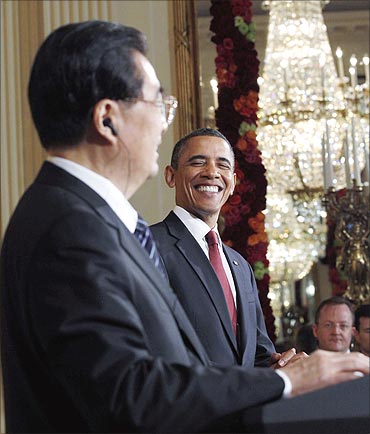
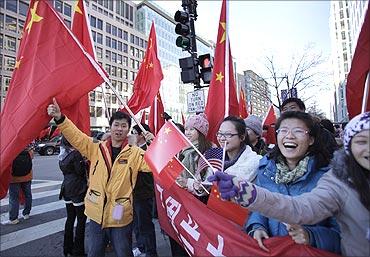
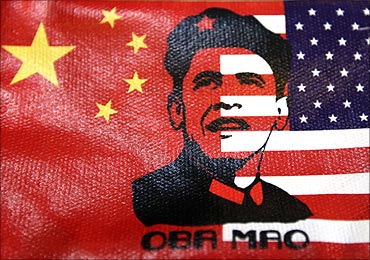
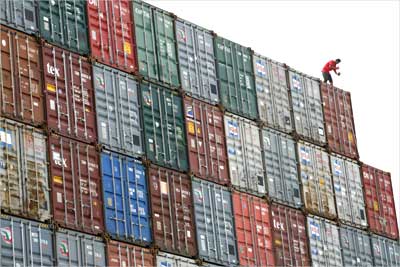

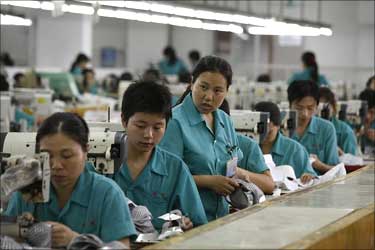
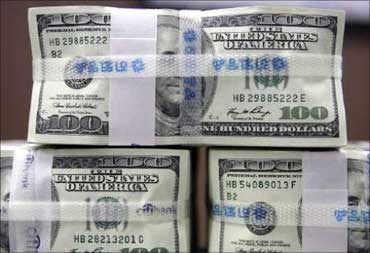

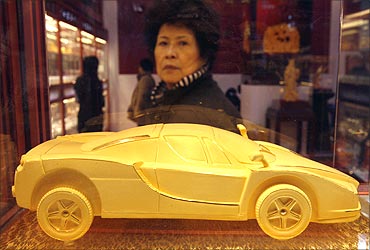
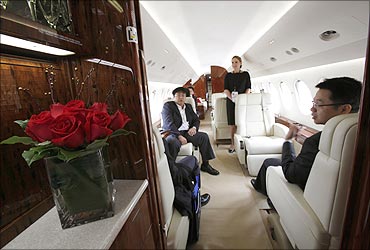
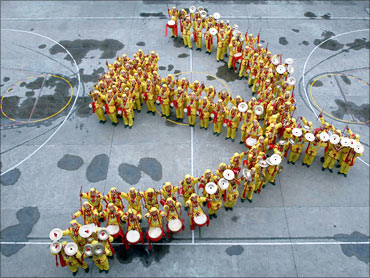

article